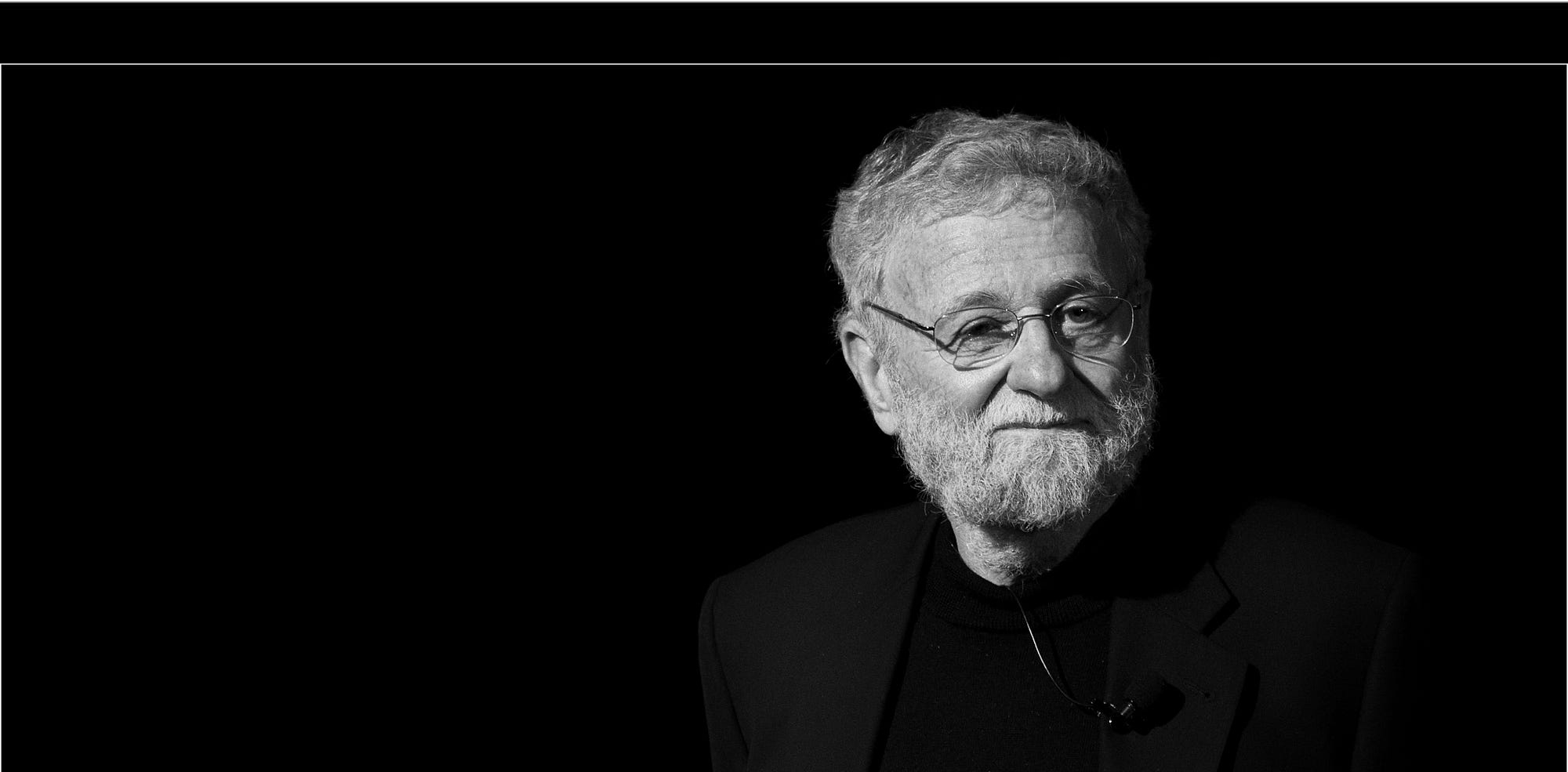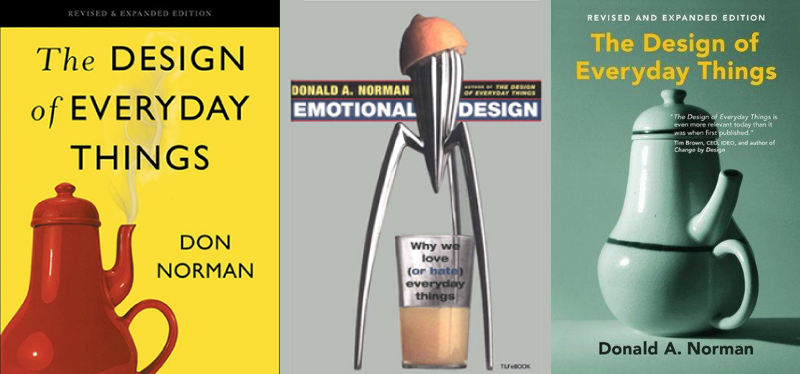

D on Norman is one of the most well-known designers, he is the voice of understanding User Experience, and user-centered design, even being “informally recognized as the father of UI/UX” (Shreya, 2023). With his books, talks, articles, and company he changed the way others approach user experience, as well as the way designers discuss design. He applies his way of thinking to a huge variety of designs, from teapots to Apple products. Though his background is in Electrical Engineering and Psychology, he has lived many lives as a Professor, Consultant, Author, Industry Executive, and Speaker (Norman, 2023). His interdisciplinary background greatly benefitted him, in particular, his understanding of psychology led his approach to design to be very logical, considering how the design is applied in comparison to the aesthetics. He compels the designers to take a step back and consider his four principles of design, finding the root issue, focusing on the people, looking at the systems point of view, and finally, continually adapting and testing to make sure you are successful with the design to fix the core problem (Norman, 2022).
The Design of Everyday Things was first written in 1988 under the name ‘The Psychology of Everyday Things’ and then a revised version was published in 2013. This book is what put Don Norman on the map as the voice of User Experience, which is defined as ‘encompasses all aspects of the end-user's interaction with the company, its services, and its products.’ (Norman & Nielsen, 2023). When he wrote this book he intended it to be used by others to create better designs, as he put it “I thought my ideas would stand for good design, for objects we could use easily and efficiently-with delight and fun.” (Norman, 2002) As a result of these functional design considerations Norman doors, Norman switches, Norman faucets, and Norman shower controls are still seen everywhere today, and are the most common topic of discussion whenever he is mentioned. His discussion on these specific everyday items was sparked when he was studying for a year at Cambridge, where he faced the challenges of all different designs for doors, locks, showers, and light switches. ‘My frustrations while in England caused me to write The Design of Everyday Things, but the problems I encountered there are universal and worldwide.’ (Norman, 2002)

Everyday items are everywhere and go by unnoticed, which is how they should be. Don Norman is passionate about functionality which is not necessarily boring designs. They should just be convenient, efficiency should always comes first not how interesting the design is just how ‘fast, efficient, easy to clean’ (Norman, 2004). When asked about technology and involving the principles he teaches in the Design of Everyday Things, he believes that they can easily be applied to all manors of design, especially technology, but designers need to look at the root of the problems so they can learn and move forward (Norman, 2002). There is always a learning curve, especially as technology is developing designers starting to get better and looking at usability for people.
When the power plant accident at Three Mile Island, in America, occurred Don Norman went and studied the behaviors along with other scientists to discover what led to the accident and it was discovered that the cause of the accident was bad design in the control room, leading to mistakes being made. He determined this was because the human error was due to faulty design. “the control panels of many power plants looked as if they were deliberately designed to cause errors” (Norman, 2002). This interested Norman greatly in the idea of human error, that they were using equipment/everyday items wrong, and that the design was not the main faulty party. “Human error? To me sounds like equipment failure coupled with serious design error.” (Norman, 2002).
One review of The Design of Everyday Things took that there are 7 key areas that people learn from, that these are important areas to cover for every designer, and that are what make up good design, that is user-friendly (Verma, 2023). Many others have reviewed the book and all have taken something from it. Others have said how it made them rethink how they approach design ‘I found most enlightening that changed my perception of basic design surrounding us’ (Sannamari, 2023) this shows how much he still impacts people, and consistently new and upcoming designers that are discovering him. He sets the way they approach design and how successful their products will be.

As Don Norman has written and shared his thoughts on designs, more people have come to know his name and his thought process, “he is a person who revolutionized the approach to design” (Sambir, 2023). His impact is seen worldwide, but there are also discussions on how his approach to design may be lacking, as making a user-centered design “means you can’t engage future possibilities in any starry-eyed, game-changing way” (Sirk, 2020), there is an argument that focusing too hard on a product that is seamless with someone's life will not allow a designer to experiment and build something brilliant. Despite the appeal of this argument, Don Norman's principles are still integral, with the utility of a design the primary consideration of viable startups.
Another key discussion around Don Norman's philosophy is that User-centered design allows people to be wasteful, and unsustainable. These designs do not consider the impact of being created, produced, waste produced, and disposed of. There is always waste produced, but the argument is that making everything user-centered people takes away the value that people place on objects therefore making them easier to dump elsewhere. “Products used unconsciously. Is this dumbing down of design leading us to products that go under the radar and, therefore easier to discard, only perpetuating the vicious cycle of consumption and waste?” (McVey, 2017). Making designs so integrated with people's lives makes us forgetful of the cost of the product and the impact it will have generations later.
One large area of User Experience that is often forgotten about or discarded is the fast-food hospitality industry, which has become a booming area, where millions are interacting every day with different ways of ordering from ordering food with a tap of a finger or driving straight through a drive-through. The fast-food business is such a clear example of ease and convenience. Almost everyone has had a positive experience at them, maybe not for the food but instead for ease of ordering, telling how long it will be, how far you are in the list of orders, and collection numbers so there is no confusion. These methods center the principles that Don Norman is discusses, finding the issue of people's orders being lost, changing how the system looks, what the customer can check on to be informed, and always adapting for the users. They found potential problems and resolved them, streamlining the process and creating overall a better more positive experience for the customers making sure they have no negative memory of ordering, so it is always seen as an easy experience.

In Conclusion
Don Norman's impact has been widely seen, he is the central voice when User Experience is being discussed and his philosophy is the primary voice in conversation around what will make a product succeed. “Thanks to his human-centered approach and his ability to make products more intuitive and easier to use he became a legend.” (Cruz, 2023). He has altered the landscape of design by demonstrating the connections that are necessary to understand to be a great designer, and he has been incredibly influential, “He opened up my eyes and make me realise that it’s my fault as a designer and not the fault of the user who can’t figure it out.” (Ngjiu, 2020). As much as he has spread the word for human-centered design there is still work to be done, as the focus for designers still often falls on the wrong area. “Instead of prioritizing the rapid release of new products, updates, and versions, we should focus more on improving the quality of human life” (Sambir, 2023) his insights and advice have been invaluable. He will continue to educate others and influence how design is taught and discussed. As he himself puts it “Many readers have told me that it has changed their lives” (Norman, 2013), Norman has changed the approach to design with his teachings.